Metal 3D Printing Case (DMLS): Microreactor for Oil Refining
“The military come, ask to print some thing the size of a matchbox, immediately buy a printer and disappear” from a conversation with suppliers of 3d printers
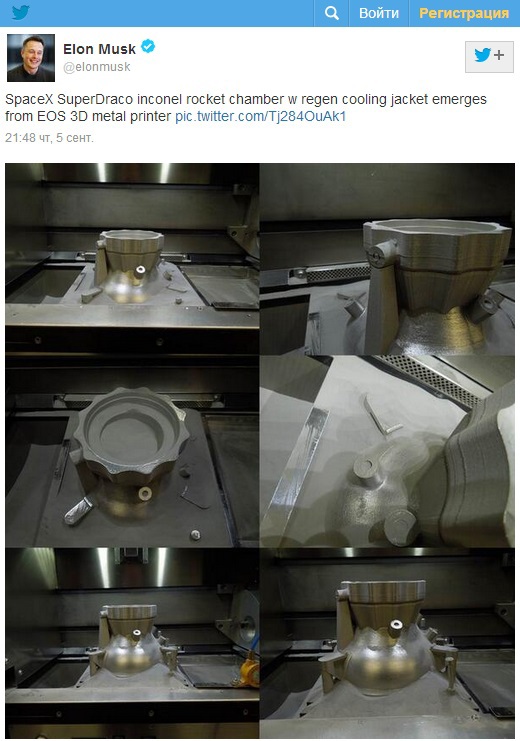
In the photo on the right is Elon Musk’s tweet that they printed a part of the rocket engine made of heat-resistant nickel-chrome alloy (Inconel) on an EOS 3d printer.

Later, at the presentation of the information appeared that SuperDraco - fully printed the 3D-printer landing engines, each of which has a thrust of about eight tons.
About how things are in the world with 3d printing services, I already wrote on Habr ; since then I have become interested in what 3d metal printers are capable of. To begin with, I tried to find a place in Moscow where you can touch / take a picture of this device, but I ran into difficulties, they say 200,000 €, and you are with unwashed hands, or these printers are located on the territory of military / space objects, which is impossible without access.
But there were St. Petersburg colleagues who shared information on how they created a microreactor on a 3D printer (from the same company as Elon Musk).
Case from St. Petersburg 3D printing service:
Customer : Russian company of the oil refining industry
Order : microreactor for oil refining
Requirements : temperature up to 600С, pressure up to 100 atmospheres, work in the environment of hydrogen and hydrocarbons, service life - 12 years.
UPD (06.06.2014): a post on Habré (October 5, 2012) A
rocket engine printed on a 3D printer
(a friend with the nickname RocketMoonlighter demonstrated a liquid rocket engine (LRE) printed on a 3D printer. )
Read more about DMLS technology,
about the EOS M290 printer
and about the microreactor
About technology
Expand
Wikipedia article on Direct metal laser sintering
Selective laser melting (SLM) is an additive manufacturing process that uses CAD file data as a digital information source and energy in the form of a high-power laser beam (usually an ytterbium fiber laser) to create three-dimensional metal parts by fusion fine metal particles of powder together.
Printing using DMLS technology is as follows: the finest metal powder is distributed in a thin layer using a coating mechanism or a roller on a platform that is lowered vertically.
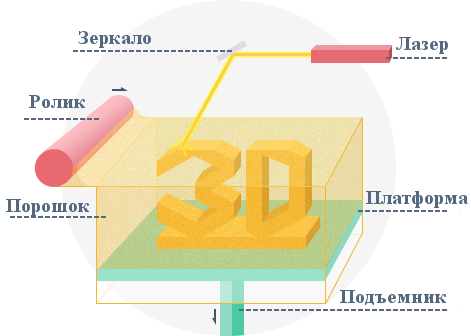

The modeling process is carried out by a laser melting the powder layer by layer, thus forming a finished object. The procedure takes place in a closed chamber; at the end of printing, the model cools down and is cleaned of powder residues.
micro things
Selective laser melting (SLM) is an additive manufacturing process that uses CAD file data as a digital information source and energy in the form of a high-power laser beam (usually an ytterbium fiber laser) to create three-dimensional metal parts by fusion fine metal particles of powder together.
Printing using DMLS technology is as follows: the finest metal powder is distributed in a thin layer using a coating mechanism or a roller on a platform that is lowered vertically.


The modeling process is carried out by a laser melting the powder layer by layer, thus forming a finished object. The procedure takes place in a closed chamber; at the end of printing, the model cools down and is cleaned of powder residues.
micro things
About the printer
Expand
EOS (Electro Optical Systems, Germany)
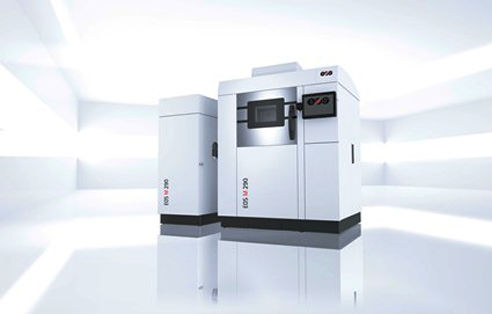
EOS M290
Machines of the "M" series are used for the manufacture of molds for general purposes, special tools, parts from special alloys for the aviation and aerospace industries.
The dimensions of the construction zone are 250x250x215 mm.
Depending on the material used, the construction speed of the part is 7.2-72.0 cm3 / h, the thickness of the construction layer is 20-100 microns, the laser power is 400 W, the
laser spot diameter is 100-500 microns.
Consumers were offered new metal powder compositions:
- cobalt-chromium alloy (CoCr);
- titanium alloys;
- stainless steels;
- Alloy Inconel (a nickel superalloy-based),
- tool steel.
Data preparation
PC with Windows
Software: EOS RP Tools; EOSTATE Magics RP (Materialize)
Format: STL (option is a converter from all standard formats)
Network: Ethernet
Certification: CE, NFPA
video maintenance

EOS M290
Machines of the "M" series are used for the manufacture of molds for general purposes, special tools, parts from special alloys for the aviation and aerospace industries.
The dimensions of the construction zone are 250x250x215 mm.
Depending on the material used, the construction speed of the part is 7.2-72.0 cm3 / h, the thickness of the construction layer is 20-100 microns, the laser power is 400 W, the
laser spot diameter is 100-500 microns.
Consumers were offered new metal powder compositions:
- cobalt-chromium alloy (CoCr);
- titanium alloys;
- stainless steels;
- Alloy Inconel (a nickel superalloy-based),
- tool steel.
Data preparation
PC with Windows
Software: EOS RP Tools; EOSTATE Magics RP (Materialize)
Format: STL (option is a converter from all standard formats)
Network: Ethernet
Certification: CE, NFPA
video maintenance
About 3d printing service
How it looks in theory
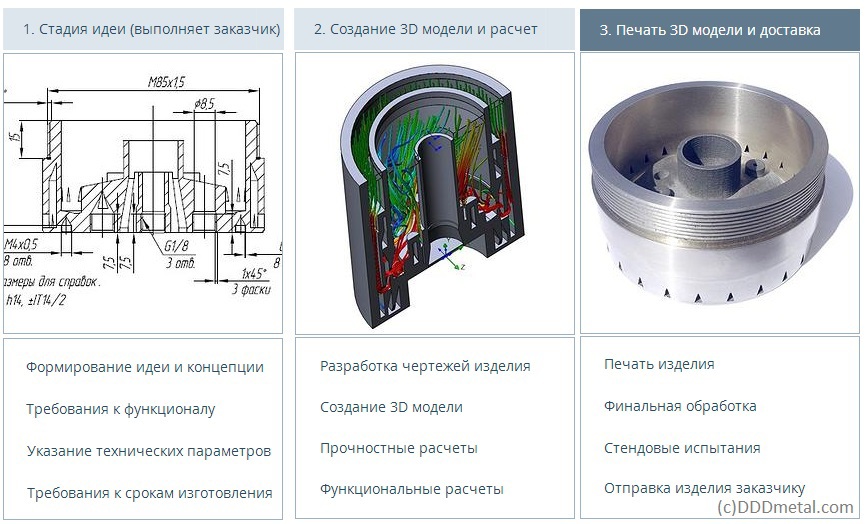
How it was in reality
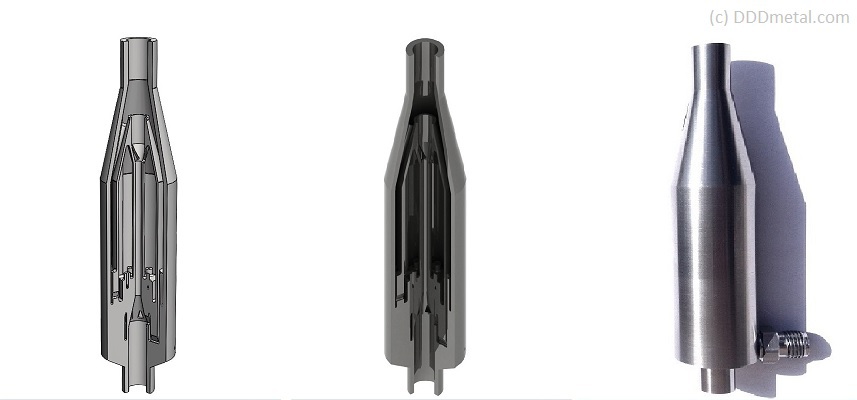
Specialists based on the drawings developed a 3D model of a microreactor.
After that, the model was printed in stainless steel.
After printing, the outside of the reactor was finally processed (polished), the threads were cut and the hydrogen supply fitting was screwed in from the side.
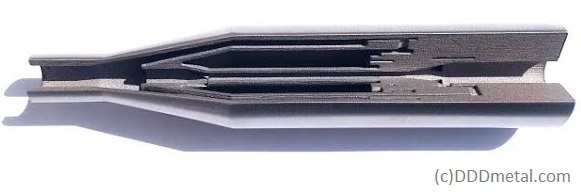
For example (at the request of the customer) the product was printed in a “cut” so that the customer could evaluate the print quality.
Microreactor size: height about 150 mm, outer diameter about 50 mm.
The part printed for about 16 hours (if 10 parts were printed at once, it also took 16 hours)
Representatives of the 3D printing service were invited to participate in testing the microreactor in a standard reactor installation (the orange frame indicates the location of the microreactor - it is there under thermal insulation).
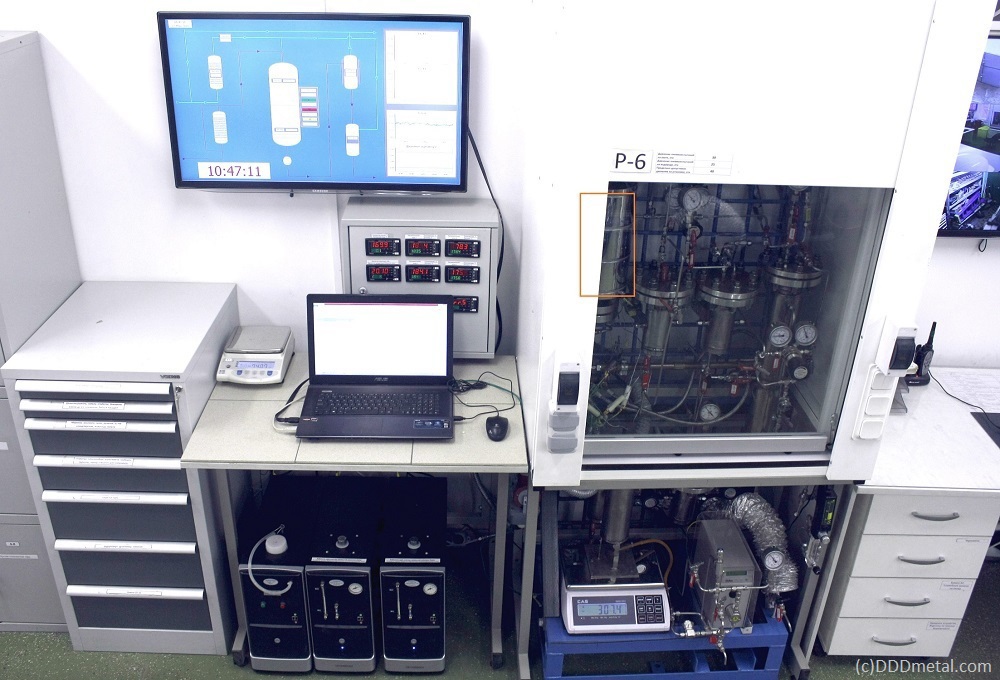
A series of tests was carried out over several months. The operating mode of the installations is continuous (24 hours a day). The pressure in the reactor was from 30 to 50 atmospheres (depending on the design of the experiments), the temperature was from 150 to 500 degrees Celsius.
test process

The reactor received high-octane gasoline components (necessary for the production of Euro-5 gasolines) the
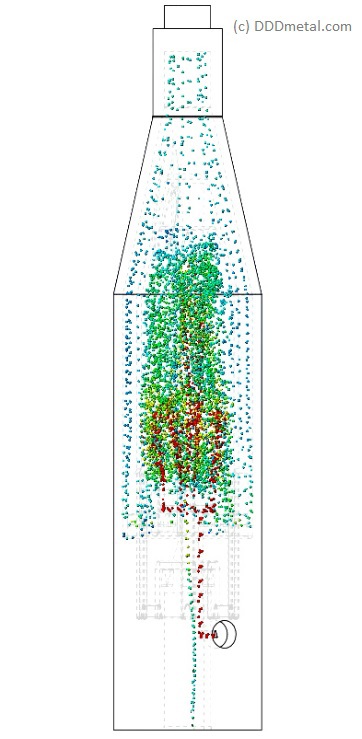
distribution of hydrogen in the reactor chamber. The color gradation displays the speed of hydrogen.
After successful tests, the customer decided to order a batch of microreactors printed on a 3D printer.
The cost of a microreactor was about $ 500, which is about 10-15 times cheaper for similar microreactors (manufactured by traditional methods).
The traditional manufacturing process is welding, turning, prefabricated construction. (Cost $ 5000-7500 per piece)
Finally, a few more products printed in the St. Petersburg 3d service:
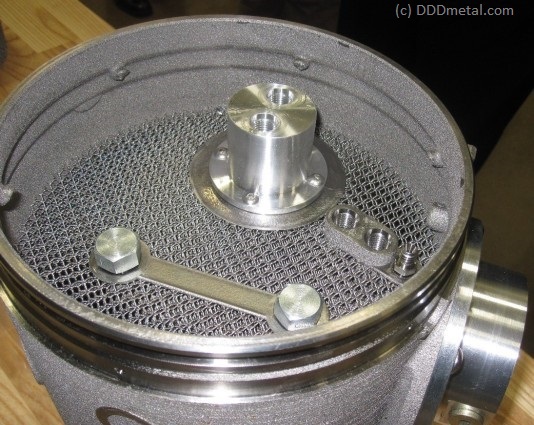
manifold for oil refining a
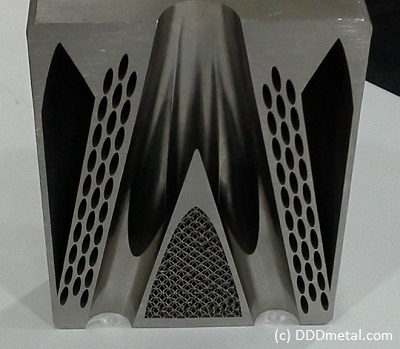
product with an internal cooling system (built-in heat exchanger)
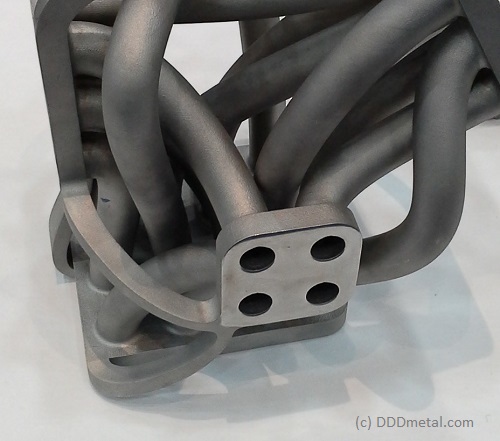
“Tube bundle” - part flow distribution systems (liquid and gas)
